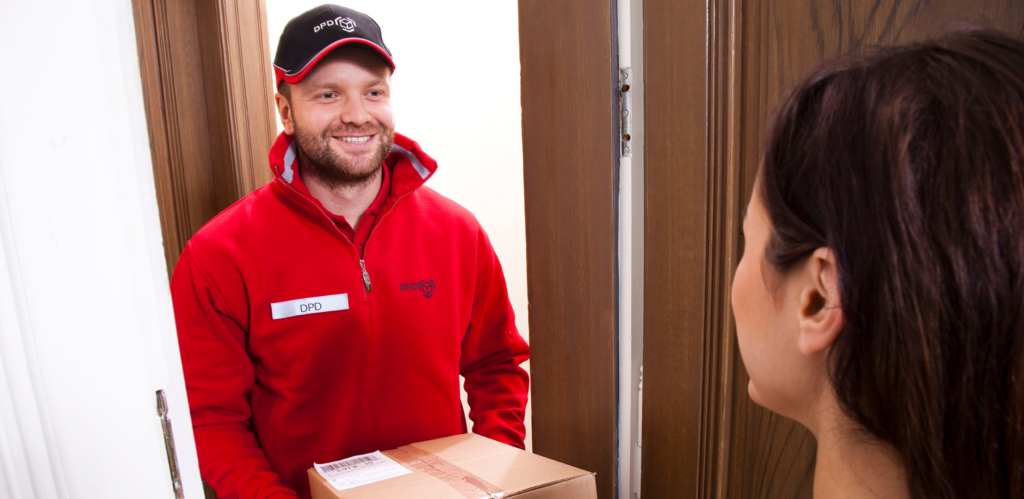Kirsten Newbold-Knipp, chief marketing officer/VP, Convey, explores how the brand relationships between shoppers, retailers and carriers are becoming more complicated in the last mile.
We have all witnessed the effects of the growth of e-commerce. Long gone are the days when consumers had to travel to the high street or a shopping center to purchase necessities. Today, the words ‘retail apocalypse’ ring out across media outlets from the UK to the USA, as e-commerce grows to 12% of global retail sales.
Meanwhile, Amazon has trained customers to expect fast, free, seamless and reliable delivery. This ‘need-it-now’ mentality has spurred same-day and ‘instant delivery’ with programs such as ASOS Instant and Tesco Delivery Savings Programs. In a world where shoppers have endless options, it’s clear the last mile has taken on outsized importance. In that last mile, brand relationships between shoppers, retailers and carriers are becoming more complicated.
Retailers cannot afford to lose their brand in the last mile
Coupled with the growth in e-commerce, nothing drives customer retention like providing superb delivery. According to our recent survey of US consumers, 98% agree that shipping impacts brand loyalty, and it is a critical touchpoint that can make or break the customer experience.
Retailers have too much at stake to lose control of their delivery experience. When 84% of customers will not return after a poor delivery experience, and 94% of customers prefer to work with retailers over carriers to resolve issues, retailers have to bear the costs of ‘Where is my order?’ (WISMO) calls, customer appeasement and lost customers if there is a shipping issue.
When retailers hand off their products to carriers, there are a lot of variables that can cause deliveries to go off the rails. Items can get damaged, be shipped to an incorrect address or delayed due to out-of-control weather conditions. Yet shoppers have made it clear: it’s no longer acceptable to leave them hanging. They need to know where their orders are, and when they’re going to receive them – including what is the plan of action if an item is missing in action. And consumers want to get that information from the brands they buy from, not from an impersonal shipping notification.
Many of these exceptions are addressable, and the negative repercussions avoidable. Retailers who want to preserve margins and retain customers need to own communications with their customers and work with their carriers to act on delivery issues before they affect shoppers.
Carriers increase tensions over last-mile brand relationships
Carriers recognize they have an important role to play in customer experience and that it can build their own brand equity. For this reason, it’s not uncommon to see carriers seeking to make a direct connection with the consumer in that critical last mile – potentially cutting out the brand or retailer.
Many thought-leading carriers in the UK have led the way in using innovative technology and self-service options such as delivery lockers, APMs and safe parcel shops or PUDOs to create more convenient, satisfying customer experiences. DPDgroup provides customers with seamless transparency, tailored SMS alerts and additional convenience options such as in-transit changes and one-hour delivery windows. Others, such as ArrowXL, provide exceptional customer experiences with automated self-service delivery options served up through an interactive voice response (IVR) system.
Tension arises when it comes to that all-important customer relationship. Brands and retailers who have the primary commercial – and often emotional – connection to shoppers want to maintain their primacy in this triad. Still, brands who leave their customers hanging at the last moment in the customer journey risk missing out on growing the strong customer relationships, customer lifetime value, and business growth they need to compete and thrive.
Delivery experience management allows retailers to meet customer promises
Whether it’s a parcel shipment or two-man delivery, the real magic happens when carriers and retailers work together to improve customer experiences, using consistent communications and turning combined visibility into data and predictive analytics to make customers even happier. Successful brands have been able to bridge their carrier data with their own, taking action to minimize poor delivery experiences and empowering customers with knowledge that they will run to their aid if a delivery goes awry.
For example, a fast-growing consumer packaged goods brand, Grove Collaborative, has deepened its brand relationship with customers by working with its carriers through delivery experience management. Increased visibility and carrier collaboration has allowed the company’s small customer service team to solve over 110,000 exceptions per month and proactively tackle problem shipments in-transit. By meeting delivery promises, Grove Collaborative’s customers were measurably happier and the company’s net promotor score increased by 9.4%. It has given the team time back to educate customers on their product lines through a ‘Grove Guides” program, improving both average order value and lifetime value.
In another example, UncommonGoods, a gifting marketplace, uses enhanced visibility and insights to meet customer promises during major holidays. The company identifies delayed shipments that will miss promise dates, stops them in-transit, and expedites new deliveries to their customers. As a result, they have saved countless customers from poor delivery experiences and have gained a cult following.
While both retailers and carriers have customer-facing interactions in the last mile, retailers that aim to put their best foot forward and retain customers need to own the experience at a very critical touchpoint of the customer journey. Successful organizations must embrace the tools, teams and processes required to manage delivery experiences at scale.
Those who proactively work with their teams to resolve any issues before they become customer-facing nightmares will reap the rewards of boosted margins, higher lifetime value, and a more sustainable business strategy.
 About the author
About the author


